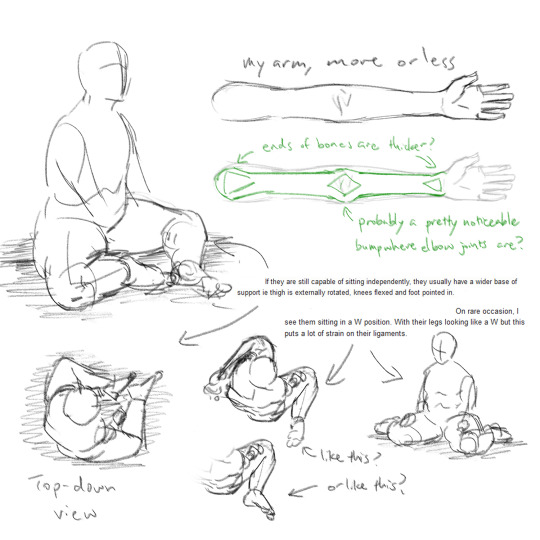#Duchenne muscular dystrophy
Text
FILM: Trevor (The Fundamentals of Caring) - Muscular Dystrophy, Wheelchair User

The Fundamentals of Caring is a 2016 American road comedy-drama film written and directed by Rob Burnett, based on the 2012 novel The Revised Fundamentals of Caregiving by Jonathan Evison. Starring Paul Rudd, Craig Roberts, and Selena Gomez.
Ben is an out-of-work writer in Seattle, avoiding his estranged wife’s attempts to serve him with divorce papers. He takes a six-week course to become a registered caregiver and is hired by Elsa, a bank office manager from England, to care for her 18-year-old son Trevor, who has Duchenne Muscular Dystrophy.
Ben adjusts to Trevor’s routine and bonds with the sardonic, sexually frustrated teenager. He convinces Elsa to let them take a road trip. He and Trevor embark on a journey to see the world's deepest pit. [wiki]
--------------------
Join me as I celebrate and post about different Disabled Characters throughout the month. Tracking #dcotm
#trevor#the fundamentals of caring#film#craig roberts#paul rudd#selena gomez#duchenne muscular dystrophy#wheelchair user#dcotm#dcotm film#dcotm july 24
6 notes
·
View notes
Video
undefined
tumblr
Gene Team
As an organism evolves, its DNA does too. Tracing the history of how it mutates, moves and duplicates can reveal surprises, like similar genes – paralogues – in distant corners of the genome. Here researchers use optical projection tomography to follow the activity of a gene called Utrn (highlighted in red) in a mouse embryo. Combining patterns of bioluminescence and fluorescence to reconstruct this 3D image reveals Utrn in many of the mouse’s early tissues. Utrn has a paralogue, Dmd, another important developmental gene found to be faulty in Duchenne muscular dystrophy in mice and humans. While these similar genes are expressed differently in health and disease, researchers believe it might be possible for Utrn to 'compensate' for Dmd in some patients. This mouse model will aid the next challenge – testing drugs to coax these related genes into working together.
Read more about this research from the Epigenetic Memory Group at the MRC London Institute of Medical Sciences here
Written by John Ankers
Video from work by Hannah J. Gleneadie and Beatriz Fernandez-Ruiz, and colleagues
Epigenetic Memory Group, MRC London Institute of Medical Sciences (LMS), Imperial College London, Du Cane Road, London, UK
Video originally published with a Creative Commons Attribution 4.0 International (CC BY 4.0)
Published in Communications Biology, March 2023
You can also follow BPoD on Instagram, Twitter and Facebook
#science#biomedicine#genes#muscular dystrophy#duchenne muscular dystrophy#dystrophin#optical tomography#mouse model#bioluminescence#fluorescence#3d imaging
14 notes
·
View notes
Text





Em Haine
Hi, it's Em...
Defeat Duchenne!
7 notes
·
View notes
Text


One of the characters in my upcoming work has Duchenne muscular dystrophy and I’ve been in touch with a physical therapist to learn more about it. These are some of my attempts to visualize what they told me about the anatomy and postures of their patients. Hopefully I can get some feedback from them on how to improve my depictions...
17 notes
·
View notes
Text
There are multiple risk factors for the development of osteoporosis. These include but are not limited to advanced age, cigarette smoking, chronic glucocorticoid therapy, low body weight, previous fractures, history of rheumatoid arthritis, and excessive alcohol intake.
Antiepileptic drugs (AEDs) are associated with adverse effects on bone health. The AEDs most commonly associated with altered bone metabolism are those that induce the cytochrome P450 enzyme system. Specifically, the AED phenytoin has a direct inhibitory effect on intestinal calcium absorption and can stimulate osteoclastic bone resorption.
A score of less than -2.5 on DEXA scanning would indicate osteoporosis, a score of -1.0 to -2.5 would indicate osteopenia, and a score greater than -1.0 indicates normal bone density. Additionally, a fragility fracture (fracture from minor trauma such as a fall from a standing height or less) is diagnostic of osteoporosis without any further workup.
Bottom Line: The risk factors for osteoporosis include advanced age, cigarette smoking, chronic glucocorticoid therapy, physical inactivity, poor intake of calcium and vitamin D, body weight less than 127 lb, previous fractures, anticonvulsant use, hyperthyroidism, celiac disease, rheumatoid arthritis, and excessive alcohol intake.
The characteristic need for the child to use his hands to push himself to an upright position when arising from the floor is the Gower sign. It results from weakness in the proximal lower extremity muscles. Physical examination reveals pseudohypertrophy of the calf, lumbar lordosis, a waddling gait, shortening of the Achilles tendons, hypotonia, and hyporeflexia or areflexia. Patients usually use wheelchairs by age 12 or 13. Additional complications include delayed growth, dilated cardiomyopathy, increased fractures, progressive scoliosis with impaired pulmonary function, cognitive impairment, and eventual respiratory insufficiency.
Bottom Line: Elevated laboratory markers in the setting of Duchenne muscular dystrophy include serum creatine kinase, aspartate aminotransferase, and alanine transaminase.
COMBANK Insight: DMD is a progressive, myopathic disorder inherited in an X-linked, recessive fashion and caused by a defective gene on the X chromosome responsible for dystrophin production. Dystrophin normally serves to stabilize and prevent the breakdown of muscle fibers. Loss of dystrophin thus leads to muscle fiber degeneration, resulting in muscle weakness.
Wilson Disease, also known as hepatolenticular degeneration, is an autosomal recessive defect involving an ATPase, Cu2+ -transporting, β-polypeptide. In this disease state, copper is deposited in tissues of the brain, liver, kidneys, and Descemet membrane of the cornea (known as Kayser-Fleischer rings, which are seen in the exhibit). Parkinsonian-like tremor and dementia may be evident when the nervous system is affected. Renal tubular damage occurs in the kidneys and cirrhosis can develop in the liver. Diagnosis can be made with the observation of decreased serum ceruloplasmin. Treatment includes penicillamine, which creates a soluble complex with the metal that can be excreted through the urine.
Bottom Line: A Kayser-Fleischer ring is a golden brown ring observed in the Descemet layer of the cornea as a result of copper deposition and is seen in Wilson disease. Labs reveal low serum ceruloplasmin and treatment with penicillamine can stop the progression of this degenerative disease state.
The types of cancers that metastasize to the bone most commonly are lung, breast, thyroid, renal, and prostate. Multiple myeloma and lymphoma can both form lytic lesions from their origins within the marrow.
A SPEP and UPEP are sensitive for multiple myeloma and should be obtained along with a measurement of the patient's total protein and globulin levels.
Bottom Line: The initial workup of a new lytic lesion generally involves a CT chest/abdomen/pelvis, SPEP/UPEP, bone scan, basic labs, and mammogram or PSA
#osteoporosis#Duchenne muscular dystrophy#muscular dystrophy#Wilsons disease#multiple myeloma#cancer
3 notes
·
View notes
Text
DYNE-251 for the treatment of Duchenne Muscular Dystrophy Received FDA Fast Track Designation
HK-Magicure -- On October 31, Dyne Therapeutics announced that the U.S. FDA has granted Fast Track designation for DYNE-251 for the treatment of Duchenne muscular dystrophy (DMD) mutations amenable to exon 51 skipping. DYNE-251 is being evaluated in the Phase 1/2 DELIVER global clinical trial.

DYNE-251 is Dyne’s product candidate being developed for people living with Duchenne muscular dystrophy (DMD) who are amenable to exon 51 skipping. DYNE-251 consists of a phosphorodiamidate morpholino oligomer (PMO) conjugated to a fragment antibody (Fab) that binds to the transferrin receptor 1 (TfR1) which is highly expressed on muscle. It is designed to enable targeted muscle tissue delivery and promote exon skipping in the nucleus, allowing muscle cells to create a truncated, functional dystrophin protein, with the goal of stopping or reversing disease progression.
In preclinical studies, robust and durable exon skipping and dystrophin expression were observed in the mdx mouse model in skeletal and cardiac muscle as well as reduced muscle damage and increased muscle function. In non-human primates, DYNE-251 demonstrated a favorable safety profile.
DELIVER is a Phase 1/2 global clinical trial evaluating DYNE-251, consisting of a 24-week multiple ascending dose (MAD) randomized placebo-controlled period, a 24-week open-label extension and a 96-week long-term extension. The trial, which is designed to be registrational, is expected to enroll approximately 46 ambulant and non-ambulant males with DMD who are ages 4 to 16 and have mutations amenable to exon 51 skipping therapy. The primary endpoints are safety, tolerability and change from baseline in dystrophin levels as measured by Western blot. Secondary endpoints include measures of muscle function, exon skipping and pharmacokinetics. Dyne anticipates reporting data from the MAD placebo-controlled portion of the DELIVER trial on safety, tolerability and dystrophin in the second half of 2023.

About Duchenne Muscular Dystrophy (DMD)
Duchenne Muscular Dystrophy (DMD) is a rare disease caused by mutations in the gene that encodes for dystrophin, a protein critical for the normal function of muscle cells. These mutations, the majority of which are deletions, result in the lack of dystrophin protein and progressive loss of muscle function.
DMD occurs primarily in males and affects an estimated 12,000 to 15,000 individuals in the U.S. and 25,000 in Europe. Loss of strength and function typically first appears in pre-school age boys and worsens as they age. As the disease progresses, the severity of damage to skeletal and cardiac muscle often results in patients experiencing total loss of ambulation by their early teenage years and includes worsening cardiac and respiratory symptoms and loss of upper body function by the later teens. There is no cure for DMD and currently approved therapies provide limited benefit.
For more articles on medicines, click here: hkmagicure
Hong Kong Magicure Medical Center has long been focusing on the import and export of new drugs, special drugs and rare disease drugs in the field of oncology. Welcome to inquiry: [email protected].
3 notes
·
View notes
Text
Hyperinflation of the rare
by Dr.Harald Wiesendanger– Klartext
What the mainstream media is hiding
“Rare”: that sounds like a negligible number. However, at least in the healthcare system, this impression is very misleading. Even if each “rare disease” affects no more than 0.05% of the population, its diversity has exploded recently: there are now over 17,000. And more and more people are affected: four million in…
#Angelman syndrome#DMD#Duchenne muscular dystrophy#Fields disease#Flynn-Aird syndrome#Foundation Auswege#genotoxic#Harald Wiesendanger#harlequin ichthyosis#maple syrup urine disease#MSUD#orphan drugs#rare disease#Rare Disease Day#rare diseases#retinitis pigmentosa#ribose-5-phosphate isomerase deficiency#tuberous sclerosis#Werner syndrome
1 note
·
View note
Text
Hi, I wanted to make a post about something that is happening in Chile, I know that health is a large scale problem, but currently in Chile there is a woman named Camila Gómez, who is the mother of a boy who has Duchenne Muscular Dysphoria, and who decided to walk from Chiloe to Santiago (the capital of Chile) with the intention of raising awareness and at the same time trying to raise money in order to pay for a medicine that Tomas, her son, must receive before October of this year
The distance between Chiloé and Santiago is 1229 kilometers, approximately 764 miles. And that is the distance she started walking on April 28th, and continues walking today. The reason why I am sharing this is because I think it needs more visibility, maybe some of you can donate, and if so, I invite you to do it in this link, or maybe you can visit the Instagram account in which they are posting the progress, if you don't understand Spanish maybe it is a little more difficult to understand, but I invite you to at least share here or go to Instagram and share something from Camila's account there
The story has been covered by multiple newscasts in Chile, yet they still can't get to the cost of the medicine
Thanks for reading!
#medicine#duchenne muscular dystrophy#chile#south america#donations#current events#i have no idea what tags should i put
0 notes
Text
dmd.arti.net
#DMD Türkiye#dmd aile rehberi#dmd#dmd dayanışma#duchenne muscular dystrophy#Becker#becker Musculer dystrophy
0 notes
Text
The global Duchenne muscular dystrophy drugs market size reached US$ 2.3 Billion in 2023. Looking forward, IMARC Group expects the market to reach US$ 5.5 Billion by 2032, exhibiting a growth rate (CAGR) of 9.96% during 2024-2032. The rising prevalence of Duchenne muscular dystrophy among the masses, the increasing number of new product approvals and launches, and favorable government initiatives providing good reimbursement policies, along with promoting target-specific treatments, represent some of the key factors driving the market.
#Duchenne Muscular Dystrophy Drugs Market#Duchenne Muscular Dystrophy Drugs#Duchenne Muscular Dystrophy#Duchenne Muscular
0 notes
Text
Mile Crushing 3-24-24

View On WordPress
#auldr#duchenne awareness#Duchenne muscular dystrophy#explore usa#Mile Monsters inc.#Motorcycle Road Trip#motorcycle travel#motovlog#rte-x#setzerpendence
0 notes
Photo

LARGE Links
Every muscle fibre in your body is packed with muscle cells firmly attached to a surrounding sheet called the basement membrane. This attachment requires a protein on muscle cells called dystroglycan and the help of the enzyme LARGE1. LARGE1 makes another protein, matriglycan, directly onto dystroglycan's outward-pointing end, forming a bridge to the basement membrane. Interfere with dystroglycan and the disease muscular dystrophy occurs. Researchers dig deeper using mice genetically engineered with dystroglycan lacking its outward-pointing stretch. Measuring specific protein levels, they find now LARGE1 can only make stunted forms of matriglycan in muscle cells. Dystroglycan could nonetheless bind the basement membrane but the muscle couldn't work properly. Fluorescent microscopy revealed disrupted neuromuscular junctions (pictured, bottom) – connections between a muscle (green) and its nerves (red) – compared with normal mice (top). This helps unpick dystroglycan’s role in muscle diseases.
Written by Lux Fatimathas
Image from work by Hidehiko Okuma and colleagues
Wellstone Muscular Dystrophy Specialized Research Center, Department of Molecular Physiology and Biophysics and Department of Neurology, Roy J. and Lucille A. Carver College of Medicine, The University of Iowa, Iowa City, IA, USA
Image originally published with a Creative Commons Attribution 4.0 International (CC BY 4.0)
Published in eLife, February 2023
You can also follow BPoD on Instagram, Twitter and Facebook
#science#biomedicine#immunofluorescence#dystroglycan#muscular dystrophy#duchenne muscular dystrophy#neuromuscular junctions#neuroscience#muscles#muscle diseases
12 notes
·
View notes
Text
FDA Approval of Nonsteroidal Treatment for Duchenne Muscular Dystrophy
Breaking news in the medical world! The U.S. Food and Drug Administration has just approved Duvyzat (givinostat), an oral medication for the treatment of Duchenne Muscular Dystrophy (DMD) in patients six years of age and older. Duvyzat is making history as the first nonsteroidal drug approved to treat patients with all genetic variants of DMD. This is a significant milestone in the treatment of…

View On WordPress
0 notes
Text
A Comprehensive Guide to Symptoms and Therapie for Duchenne Muscular Dystrophy.

A genetic condition known as Duchenne Muscular Dystrophy (DMD) is characterized by increasing weakening and degradation of the muscles. It usually appears in early childhood and affects guys more than girls. As the illness worsens, major problems with mobility and everyday living are experienced. Even though there isn't a cure for DMD yet, there are a number of treatments and interventions that can help patients live better lives by managing their symptoms and delaying the advancement of their condition.
Duchenne muscular dystrophy symptoms include:
Muscle Weakness:
Usually manifesting in early childhood, muscle weakness is one of the main symptoms of DMD. Activities requiring muscle, such ascending stairs or getting out of a seated position, may be challenging for kids with it.
Motor Milestone Delays:
Children diagnosed with Duchenne Muscular Dystrophy (DMD) may face delays in achieving motor milestones like sitting, crawling, and walking.
Progressive Muscle Degeneration:
As a result of increasing weakness and decreased mobility, muscle degeneration advances over time. This may make it difficult for you to stand, walk, and carry out daily chores on your own.
Contractures:
Muscle weakness and imbalance can result in contractures, or joint stiffness, which limits the range of motion in the afflicted joints.
Cardiopulmonary consequences:
Cardiomyopathy and respiratory insufficiency are examples of cardiopulmonary consequences that can result from DMD's effects on the heart and respiratory muscles.
Treatments for Muscular Dystrophy of Duchenne:
Corticosteroids:
In Medipocketusa, Prednisone and deflazacort are two examples of corticosteroids that are frequently used to help patients with DMD gain more muscle strength and slow the course of their disease.
Physical Therapy:
By emphasizing the preservation of mobility, prevention of contractures, and optimization of overall function, physical therapy is essential in the management of DMD.
Respiratory Support:
People with DMD may need non-invasive ventilation or mechanical ventilation to help them breathe when their respiratory muscles weaken.
Cardiac Management:
Medipocketusa treat cardiomyopathy and other cardiac issues related to DMD, routine cardiac monitoring and care are crucial. As the disease worsens, assistive devices like wheelchairs, walkers, and braces can help people with it preserve their freedom of movement.
Clinical trials for muscular dystrophy (Duchenne):
The advancement of knowledge and the creation of novel treatments for Duchenne muscular dystrophy depend heavily on clinical trials. These clinical trials could look into cutting-edge methods of treating DMD, such as exon skipping, gene therapy, and other focused interventions. By taking part in clinical trials, people with it can receive state-of-the-art treatments and further scientific understanding in the field.
Conclusion:
In Medipocketusa, there is hope for better results due to continuous research and breakthroughs in therapy, despite the considerable problems that Duchenne Muscular Dystrophy presents for affected individuals and their families. People with it and those who care for them can make educated decisions about their care and contribute to the advancement of its research and treatment options by learning about the symptoms of the disease and investigating potential medicines and clinical trials.
0 notes
Text
Precision Medicine Unleashed: The Impact of Gene Therapies on Neuromuscular Health
In the realm of medical breakthroughs, nucleic acid and gene therapies are emerging as promising avenues for revolutionizing the treatment landscape of neuromuscular disorders. From approved therapies to groundbreaking advancements in the pipeline, the trajectory of treating conditions like Duchenne Muscular Dystrophy (DMD) and Spinal Muscular Atrophy (SMA) is witnessing a transformative…

View On WordPress
#CRISPR-Cas9#Duchenne Muscular Dystrophy#Gene Therapies#Gene Therapy#Neuromuscular Disorders#Neuromuscular Disorders Treatment#Nucleic Acids#Nucleic Acids And Gene Therapies In Neuromuscular Disorders#Precision Medicine#Spinal Muscular Atrophy
0 notes